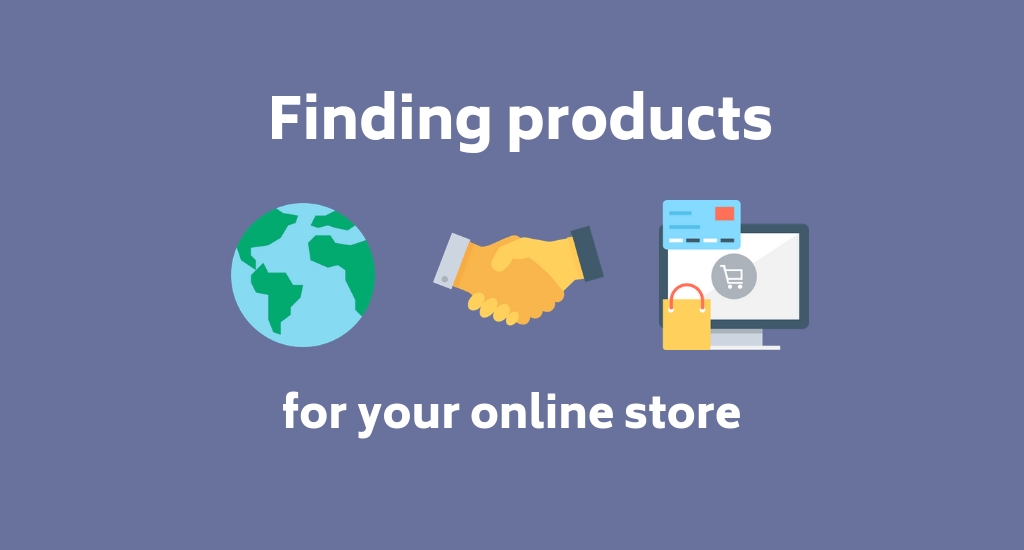Time and time again new entrepreneurs hit the brick wall asking themselves a question: Where do I find item X at a reasonable price? You’re probably one of many who go through this pain. Let’s make it clear: it’s not easy to source products. In this post, we’re going to give you a set of tactics on how to find products for your online store. Let’s go!
Challenge #1: Get a legitimate supplier
Finding a reliable business partner is tough. A credible partner is one who delivers a stock of good-quality products at the right time. Before you partner with a new business, you’ll have to put your own effort into verifying it.
Best practice
An important rule is to perform due diligence, which involves doing research about a company you’re going to work with. Here’s what we recommend:
Analyze the supplier’s website
Right from the start, go to their “About us” and “Contact us” pages. Make sure a supplier have mentioned their office address. Next, find it on Google maps to see if it matches the actual location.
Verify domain information
Go to domaintools.com to see more detailed information about registrant details like name and registration date. Also, identify the domain owner and publicity it attracts.
Ask about accessible stock
If a supplier is not transparent about their current inventory levels, that’s not a good sign. Probably, commitment isn’t his strong point.
Look up the prices
Some prices seem too good to be true? Then, they probably are. Anything 40-50% below the retail price is not worth your time and effort.
Check lead time and delivery rate
Your potential supplier is slow to disclose estimated lead times vs. actual delivery statistics? That’s another cause for concern. Any evidence confirming the reliability of a business silenced by a supplier works against them.
Challenge #2: Where to find suppliers
Naturally, internet seems to be the best place to begin your search. Once you have progressed through the initial stages of research, try out more direct methods like attending trade events.
Best practice
Below, you will find some tried and tested ways of searching for suppliers:
Google search
Start your preliminary search with words like “supplier”, “wholesale” “distributor”, and add keywords related to your niche. For example, if you own a game store, try using “digital games”, “video games” or “game title” + distributor/wholesaler, or “publisher name” + distributor/wholesaler. Remember that wholesalers’ websites are not much SEO-friendly, so you may go through a dozen of Google pages before you end up with a satisfying result.
Wholesale directories and forums
If Google search doesn’t yield the desired results, start looking for online communities on wholesale forums, e.g. thewholesaleforum.co.uk and online directories, e.g. Oberlo, Alibaba or Aliexpress.
Referrals
Nothing works better than a personal recommendation from people you trust. Ask your family, closest friends or, if you are in the business for a while, request referrals from your partners.
Networking
Even though your business is online, never underestimate the role of eye-to-eye meetings. Trade events relevant to your industry are definitely worth looking up. If you are in the game industry, consider attending thematic events like Gamescom or PAX festivals.
Challenge #3: Choose a sourcing method
You need to be well aware of sourcing options available if you want products to sell profitably. It doesn’t matter which option you pick, the key thing is to provide the right amount of stock to your customers. Successful sellers don’t stand still!
Best practice
Among the most popular sourcing methods you will find:
Dropshipping
Forget storing and shipping nightmares. Forget the overhead costs, too. Drop shipping will save you tons of work as you delegate shipping and warehousing to your dropship partner. Unfortunately, margins are slim, and you have little control over stock. What if you could set your own profit margins with the steady access to inventory? Read more here
Wholesale volume sourcing
It involves ordering large quantities of stock from one or multiple partners. You are responsible for storing, packaging and shipping products to customers. If you have large capital at hand plus a solid customer base, this option is for you.
Overstock sourcing
This method works well if you want to get products on a one-time basis. There’s no guarantee, however, that a supplier will provide you with the same batch of products next season. Usually, if the supplier is desperate to get rid of stock, you can negotiate lower prices.
Light wholesale sourcing
If your capital is limited and the stock has to be supplied, this is a perfect choice. It comes down to making low-volume purchases at wholesale rates. You can still make a decent profit with light sourcing.
Liquidation buying
This type of making purchases entails buying the stock, either new or last-season that wholesalers no longer need. Suppliers may be so eager to sell it that you can negotiate a deal.
Challenge #4: Check your competition
Examining your competition before you start sourcing a product is an absolute must. What is it that your competitors do and it’s worth following?
Best practice
Listen to your competitors’ pitch
Add products to the cart – this will trigger some retargeting ads or abandoned cart emails. By analyzing them, you will get your competitors’ idea of marketing strategy.
Examine their prices
Find out what price points are common with your competitors. Get their price list. Make notes of products that you’re interested in – write down their names, prices and sales volume. You can also use price comparison websites to get the clearer picture of competitors’ price range.
Check their online reputation
Study review websites (TrustPilot or Test Freaks) and social media (Facebook, Twitter) to read comments on customers shopping experience. Are they positive, neutral or negative? If some of them are blatant criticism, perhaps, you could offer a better alternative to win these customers. Use Social Mention to view real-time mentions of a company.
Research their website
Browse the pages of competitors’ store. What does their product page look like? Do they provide meaningful content to their customers? What is their SEO strategy? You can use some Google Keyword Planner to spy on your competitors’ keywords.
Challenge #5: Determine sales potential
Although it’s the most crucial aspect of the product search, we’ve left it to the very end. We’ve already given you an extensive treatment of the topic so if you are curious as to which factors will have a positive impact on your sales, head over to our previous post.
Best practice
Always keep yourself asking these questions: Is my product going to make a difference? Can I offer something better than what my competitors are selling? Keep these two issues in mind as well:
Cross and up-sell opportunities
Check the kinds of products that go well together. What items make especially good upsells and cross-sells with your competitors? Phone accessories and digital games, for example, usually have a high potential for both.
Shipping costs
The smaller the product, the better the outlook for cheap shipping and, therefore, free delivery for customers. With digital products like digital game downloads, shipping costs are not an issue. Go to our previous article to find out how to start selling digital games.
A final word
To conclude, the path from getting the right product idea to searching for the supply partner comes with a number of challenges. You will find it easier to manage them by following the above suggestions.
Finding products for your online store is a vital step in building a successful e-commerce store. Do your homework right not to firefight issues in the “doing business” phase.
About the author

- Berry
- E-commerce owner and blogger. A trained accountant and an avid gamer. Healthy food aficionado.
Latest entries
 Article2018.09.27The Pros and Cons of Order Fulfillment
Article2018.09.27The Pros and Cons of Order Fulfillment Article2018.09.27The Good and the Bad of eCommerce Platforms for Large Enterprises
Article2018.09.27The Good and the Bad of eCommerce Platforms for Large Enterprises Article2018.09.24How Wholesale Directories Like Worldwide Brands Can Empower Your Retail Business
Article2018.09.24How Wholesale Directories Like Worldwide Brands Can Empower Your Retail Business Article2018.09.24eCommerce Software for Large Enterprises: How to Choose It in 8 Steps
Article2018.09.24eCommerce Software for Large Enterprises: How to Choose It in 8 Steps


